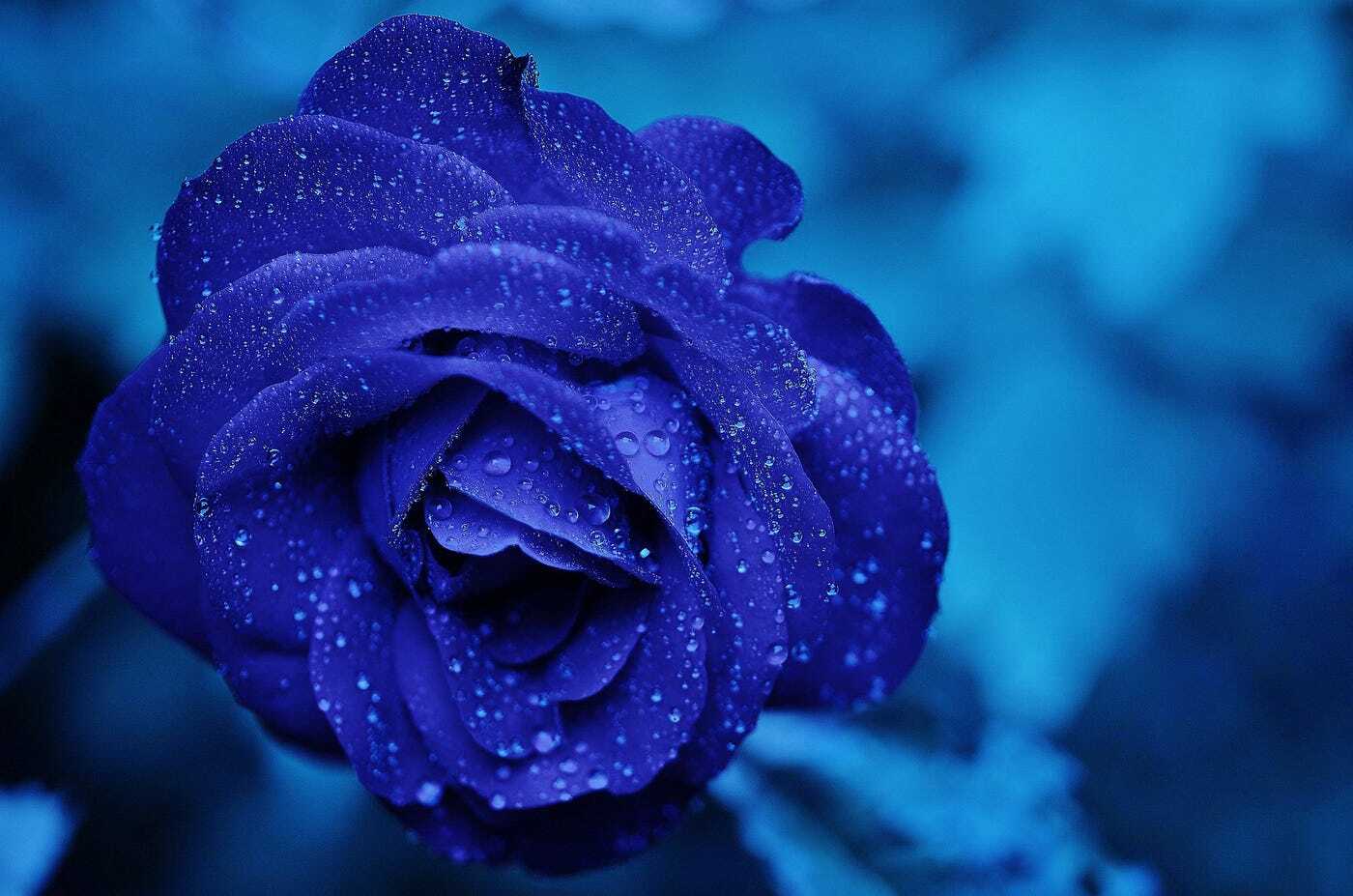
Blue Jays are more than just a pretty bird with striking blue feathers. These clever creatures are known for their intelligence, complex social systems, and unique behaviors. Ever wondered why they mimic the calls of hawks? Or how they manage to store food for the winter? Blue Jays are full of surprises, and their vibrant blue color isn't even real—it's a trick of the light! From their diet to their nesting habits, there's a lot to learn about these fascinating birds. Ready to dive into 28 amazing facts about Blue Jays? Let's get started!
Key Takeaways:
- Blue is the world's favorite color, rare in nature, and has a rich historical and cultural significance, making it a fascinating and influential hue across various fields and aspects of life.
- From the sky to the sea, from art to language, blue's impact is widespread and diverse, with fun and quirky facts adding to its allure and mystique.
What is Blue?
Blue is one of the primary colors in the RGB color model. It often symbolizes calm, stability, and depth. Let's dive into some fascinating facts about this cool hue.
-
Blue is the world's most popular color. Surveys show that people across different cultures and age groups consistently choose blue as their favorite color.
-
The sky appears blue due to Rayleigh scattering. Shorter blue wavelengths scatter more than other colors when sunlight passes through the atmosphere, making the sky look blue.
-
Blue is rare in nature. Unlike green or brown, blue is less common in the natural world. Few animals and plants exhibit true blue pigmentation.
Historical Significance of Blue
Blue has played a significant role throughout history, from ancient civilizations to modern times.
-
Ancient Egyptians prized blue. They created the first synthetic pigment, known as Egyptian blue, around 2200 B.C. It was used in art and jewelry.
-
Medieval Europe saw blue as a symbol of the Virgin Mary. Artists used ultramarine, a costly pigment made from lapis lazuli, to paint her robes.
-
Blue jeans revolutionized fashion. Invented by Levi Strauss in 1873, blue jeans became a staple in wardrobes worldwide.
Blue in Science and Technology
Blue has fascinating applications in science and technology, influencing various fields.
-
Blue LEDs won a Nobel Prize. In 2014, the inventors of blue light-emitting diodes (LEDs) received the Nobel Prize in Physics for their contribution to energy-efficient lighting.
-
Blue light affects sleep. Exposure to blue light from screens can disrupt sleep patterns by suppressing melatonin production.
-
Blue whales are the largest animals on Earth. These majestic creatures can grow up to 100 feet long and weigh as much as 200 tons.
Cultural Impact of Blue
Blue has left an indelible mark on cultures around the globe, influencing art, language, and more.
-
The phrase "feeling blue" means feeling sad. This idiom likely originated from the association of blue with melancholy and depression.
-
Blue is a sacred color in Hinduism. It represents the divine and is often associated with deities like Krishna and Shiva.
-
The "Blue Period" was a phase in Picasso's career. From 1901 to 1904, Picasso's paintings featured shades of blue, reflecting his somber mood.
Blue in Nature
Despite its rarity, blue appears in some of the most stunning natural phenomena and creatures.
-
The Blue Morpho butterfly is known for its iridescent wings. Found in Central and South America, its wings can appear to change color depending on the angle of light.
-
Blue jays are striking birds. Their vibrant blue feathers and distinctive calls make them easily recognizable in North American forests.
-
Bluebells create enchanting woodland scenes. These flowers carpet forest floors in Europe, particularly in the UK, during spring.
Blue in Modern Culture
From sports to entertainment, blue continues to be a prominent color in modern culture.
-
Blue is a popular color for sports teams. Teams like the Dallas Cowboys and Chelsea FC sport blue uniforms, symbolizing loyalty and strength.
-
The Smurfs are iconic blue characters. Created by Belgian cartoonist Peyo, these tiny blue creatures have been beloved since their debut in 1958.
-
Avatar's Na'vi are blue-skinned aliens. James Cameron's 2009 film featured these visually stunning characters, contributing to its massive success.
Blue in Language and Expressions
Blue has found its way into many idiomatic expressions and phrases.
-
"Once in a blue moon" means something rare. This phrase refers to the uncommon occurrence of a second full moon in a single calendar month.
-
"Out of the blue" describes something unexpected. It suggests that an event or news came without any warning.
-
"True blue" signifies loyalty. This phrase dates back to the 17th century, originally referring to the steadfastness of blue-dyed cloth.
Blue in Art and Design
Artists and designers have long been captivated by blue, using it to evoke various emotions and themes.
-
Yves Klein created his own shade of blue. Known as International Klein Blue (IKB), this vibrant hue became a hallmark of his work in the 1950s and 60s.
-
Blue is often used in corporate branding. Companies like Facebook, Twitter, and IBM use blue to convey trust, reliability, and professionalism.
-
The Blue Mosque in Istanbul is a masterpiece. This stunning structure, completed in 1616, features intricate blue tiles and is a major tourist attraction.
Fun Facts about Blue
Let's wrap up with some fun and quirky facts about blue.
-
Blue lobsters are extremely rare. The odds of finding a blue lobster are about 1 in 2 million due to a genetic mutation.
-
Blue M&Ms were introduced in 1995. They replaced the tan-colored M&Ms after a public vote.
-
Blue eyes are a result of a genetic mutation. All people with blue eyes share a common ancestor who lived around 6,000 to 10,000 years ago.
-
Blue is the color of the United Nations flag. It symbolizes peace and unity among nations.
The Final Splash
Blue whales are truly fascinating creatures. Their sheer size, unique behaviors, and vital role in marine ecosystems make them a subject of endless curiosity. From their heart being the size of a small car to their ability to communicate across vast ocean distances, these gentle giants never cease to amaze. Understanding these facts not only enriches our knowledge but also highlights the importance of conserving their habitats.
By protecting blue whales, we ensure the health of our oceans, which in turn supports countless other species, including humans. Every fact about blue whales underscores their significance in the natural world. So, next time you think about the ocean, remember the blue whale and its incredible journey through the deep blue sea. Let's continue to learn, share, and protect these magnificent creatures for future generations.
Frequently Asked Questions
Was this page helpful?
Our commitment to delivering trustworthy and engaging content is at the heart of what we do. Each fact on our site is contributed by real users like you, bringing a wealth of diverse insights and information. To ensure the highest standards of accuracy and reliability, our dedicated editors meticulously review each submission. This process guarantees that the facts we share are not only fascinating but also credible. Trust in our commitment to quality and authenticity as you explore and learn with us.


